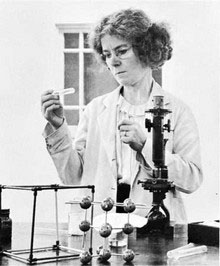William Rowan Hamilton (1805-1865). Image credit: Wikimedia Commons
Today is World Intellectual Property Day, a day that’s always celebrated on 26 April. Here we look at some of the scientific breakthroughs Irish pioneers have brought to the world.
In science, we have a wealth of trailblazers, too many to mention here, but here’s a glimpse of people who have made pioneering advancements in areas such as chemistry, astronomy, maths and clean tech.
Sir Francis Beaufort
Firstly, let’s take a look at the Navan-born Sir Francis Beaufort. The hydrographer, who was also an officer in the British Royal Navy, was born in 1774.
Beaufort was the creator of the wind force scale. His 13-point Beaufort Scale was adopted by the British Navy in 1838. He died on 17 December 1857 at the age of 83. Beaufort Island in the Antarctic is named after him.
Robert Boyle
Then, we have Robert Boyle. Born in 1627 in Lismore Castle in Co Waterford, Boyle was a natural philosopher, chemist and physicist. He is widely regarded as one of the original modern chemists. He is best known for Boyle’s Law.
In the mid-1600s Boyle studied the relationship between the pressure p and the volume V of a confined gas held at a constant temperature. His discovery that the product of the pressure and volume are observed to be nearly constant has proved to be fundamental to our understanding of gases and atmospheric pressure.
Boyle died in 1691 at the age of 64 in London.
Kathleen Lonsdale

Kathleen Lonsdale pictured in 1948. Image credit: Wikimedia Commons
Born in Newbridge, Co Kildare on 28 January 1903, Kathleen Lonsdale was an Irish crystallographer who made leaps in the area of X-ray crystallography. She established the structure of benzene by X-ray diffraction methods in 1929. Lonsdale was also a professor of chemistry
at University College, London from 1949, the first woman professor at the college.
She was one of the first woman elected to Fellowship of the Royal Society in 1945.
Lonsdale died on 1 April 1971 from leukaemia.
John Tyndall
John Tyndall, a native of Leighlin Bridge in Co Carlow, was born in 1820. He was one of the first scientists to recognise the effect of greenhouse gases. His invention of the light pipe also laid the foundation for developments in fibre optics.
It is 151 years since Tyndall published his breakthrough scientific paper, which identified the critical role of greenhouse gases in maintaining the earth’s temperature.
Tyndall National Institute in Cork is named in his honour.
William Rowan Hamilton
Born in 1805 in Dublin, William Rowan Hamilton was an astronomer and mathematician who made vital contributions to classical mechanics, algebra and optics.
He was known as a child prodigy. By the age of five he had apparently learned how to speak Latin, Greek and Hebrew.
In 1824 he submitted his first paper on mathematics to The Royal Irish Academy.
In 1827 he was appointed professor of astronomy at Trinity College Dublin, even though he was still a 21-year-old undergraduate at the university at the time.
In that same year Hamilton presented a theory of a single function, now known as Hamilton’s principal function. This research helped establish the wave theory of light.
Hamilton also developed the theory of quaternions, which was later determined to have important applications in quantum physics and mechanics.
One of his greatest contributions to science is regarded as being his reformulation of Newtonian mechanics, now known as Hamilton mechanics. He introduced this reformulation in 1833.
Hamilton died on 2 September 1865 and is buried in Mount Jerome Cemetery in Dublin
The RCSI Hamilton Society was founded in his name in 2004 at the Royal College of Surgeons in Ireland.
Jocelyn Bell Burnell
Jocelyn Bell Burnell, who was born in 1943 in Belfast, is an astrophysicist. She is renowned for having discovered the first evidence of a pulsar – rotating neutron stars that release regular bursts of radiowaves. She made this discovery while working as a postgraduate student at Cambridge University in 1967.
Now a visiting professor at Oxford University, Jocelyn Bell Burnell will be speaking at the Euroscience Open Forum 2012 in Dublin City this July, as part of Dublin’s 2012 tenure as European City of Science.
In 2008 she become the first female president of the Institute of Physics.